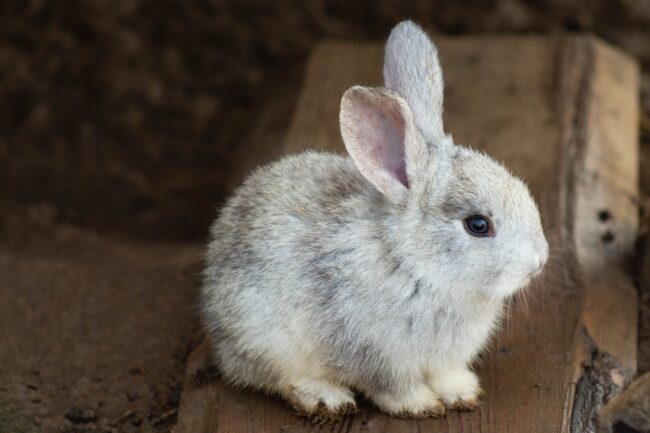Table of Contents
Many people have rabbits as pets and it’s not hard to understand why. They’re cute, engaging, and playful. Rabbits are also very adaptable and make perfect pets for those who do not want cats or dogs or do not have the space for them.
But many new rabbit owners often find it disturbing when their pet passes away and they are discovered the next morning in a stretched-out position. What does this position mean?
This article aims to explain the reason behind this common body position when rabbits pass away. We will also look at common signs and behavior of sick rabbits to potentially avoid the loss of your pet rabbit.
The Stretched Out Position
Yes. It is normal. It’s extremely common to find a dead rabbit in this position. Indeed, some experts consider this position as a sign that a rabbit might’ve passed more peacefully than most.
The average lifespan of a rabbit is between 6 and 12 years. Vulnerable to many things, they don’t survive for a long time. When rabbits are near death, they stretch out their body. For them, it’s often a way to make themselves more comfortable. That being said, their position of death does not reflect the cause.
Potential Cause of Deaths
The average body temperature of rabbits ranges from 100 degrees Fahrenheit and 104 degrees Fahrenheit. They should have a heart rate of 180 to 250 beats per minute.
A sick or dying rabbit will show changes in its vital signs. Thus, it becomes essential for you to understand their typical symptoms and behavior when they’re sick or dying. Here are the possible reasons for a sudden and stretched out death in rabbits.
1. Fear or Frightening Environment
Rabbits are easily scared. At home, loud noises like kids screaming can frighten them. They are always roaming around, and sudden exposure to the outside world is scary for them. If they go outside and see any animal, they might get scared to the extent of having a heart attack.
A peaceful and consistent environment is the key to your rabbit’s health. Thus, it is also advisable to avoid keeping rabbits with children below 12.
The loud atmosphere and extensive playtime are injurious to their health. Cats, dogs, and other animals are just as scary. This makes heart attacks a big cause of sudden deaths among rabbits.
2. Poisonous Substances
The eating habits of rabbits are very adventurous. They tend to eat anything and everything they deem fit. These things might include your plants in the garden, grass, or any vegetation surrounding your house. Pesticide, insecticide, and chemical substances to save your plants are fatal to these little beings.
It is essential to be aware of a rabbit’s eating habits, what will work, and what might harm them. The consumption of any sharp object, indigestible material lying around the house, or pesticide-showered plants is poisonous. In that case, make sure to keep your pet far away from the garden.
3. Contact With Sharp Objects
If you have a pet rabbit, make your home safe for them to explore. Even if you keep them in a cage, you need to schedule some time to free them of their hutch. As we’ve mentioned above, they like to eat whatever may come in front of them, and during this free time, there are plenty of strange things to nibble on!
Thus, it’s essential to keep sharp and solid objects like glass, metal nails, and plastic with sharp edges away from your pet. Their chewing habit makes them vulnerable to eating any of these items. This can lead to internal bleeding and injuries that often go unnoticed until too late.
4. Fly Strike
If a germ-infested fly lays eggs on a rabbit, it can have fatal consequences. The eggs hatch and the larvae become parasites eating the rabbit inside out. These flies are attracted to the dirty bottoms of rabbits. Thus, it is essential to clean your pet’s bottom on a regular basis.
5. Gastrointestinal Stasis
Gastrointestinal stasis is a common condition among rabbits that slows down the immune system and eventually stops it from functioning normally. This process makes a rabbit’s body bloat through the buildup of gases in its stomach.
Lack of movement, stress, improper diet, and a bad nutrition balance, along with internal blockages, can all cause this condition.
This disease develops when the rabbit is relatively young but won’t cause death until much older. Good care that includes exercise and proper nutrition can lower the chances of your pet developing GI stasis.
Symptoms of a Dying Rabbit
While most rabbits are generally healthy and robust, there are signs that should set off your alarm bells. A sick rabbit is constantly lethargic and refuses food and water. In some cases, they may become more aggressive or fearful, show signs of pain, diarrhea, or experience muscle spasms. Breathing difficulty is a sign that your rabbit’s life is in danger and should be taken to a vet immediately.

